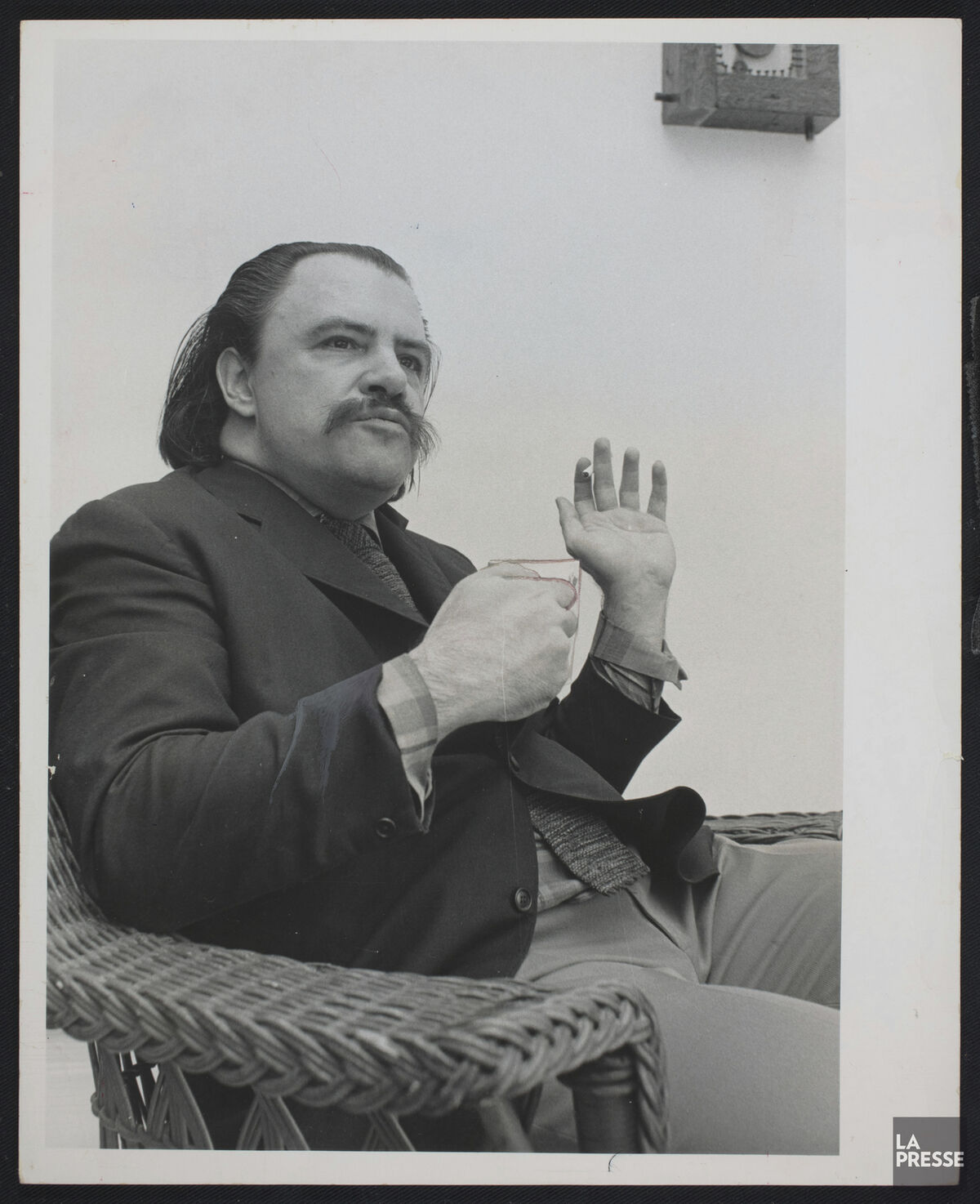Claude Gauvreau is a Quebec poet, playwright and art critic. Through his art, he explores the disarticulation of language, that is, the detachment of the elements that make up a word, and the invention of new words using sounds that only he can understand. In so doing, he developed a language known as explorean (Denis, J.-P., 1993). Although the Automatist movement is best represented in the visual arts (painting and sculpture in particular), Gauvreau uses the foundations of this movement in his writing. In fact, he prefers authenticity and passion to reason and order, meaning that his works reflect who he is. He doesn't try to control the outcome of his writing; he lets himself be guided by his intuition (Langlois, C., 2011).

Source: Claude Gauvreau [Photograph], Talbot, P.-H., 1970, BAnQ, (URL).
His work is part of the Automatist movement, which also included painter Paul-Émile Borduas. Claude Gauvreau co-signed the Refus Global manifesto, whose main essay was written by Borduas. This document, published in 1948, aims, among other things, to liberate artistic creation from moral conformism. In particular, the manifesto criticized the role of the Church at the time.
Between 1948 and 1960, he kept up a correspondence with Paul-Émile Borduas: these letters provide an insight not only into the Automatist movement, but also into Claude Gauvreau's life and suffering.
For many years, Gauvreau was in love with actress Muriel Guilbault. When she committed suicide in 1952, he was deeply affected. Following the death of the woman he called his "incomparable muse", Gauvreau spent several periods in a psychiatric hospital.
-
1925: Claude Gauvreau is born in Montreal on August 19.
-
1944 to 1946: He writes 26 texts that, taken together, are called Les entrailles.
-
1947: He earns a bachelor's degree in philosophy and directs Bien-être, a play he wrote for Muriel Guilbault.
-
1952: After Muriel Guilbault's suicide, Claude Gauvreau begins writing the novel Beauté baroque.
-
1953: He writes the play L'asile de la pureté.
-
1956: He writes the play La charge de l'orignal épormyable.
-
1958: Claude Gauvreau begins writing the play Les oranges sont vertes, which he completes in 1970.
-
1970: He takes part in the Nuit de la poésie, a historic event in Quebec literature, where large numbers of people gather at the Gesù Theater to listen to the province's poets.
-
1971: On July 7, Claude Gauvreau is found dead in Montreal.
Denis, J.-P. (1993). Claude Gauvreau : du tombeau du père au langage exploréen. Voix et Images, 18(3), 483-494. https://doi.org/10.7202/201045ar
Langlois, C. (2011). L’adaptabilité des radios-théâtres de Claude Gauvreau Projet en recherche-création autour du radio-théâtre Magruhilne et la vie [mémoire de maitrise, université Concordia]. Spectrum. https://spectrum.library.concordia.ca/7652/1/Langlois_MA_S2011.pdf
Talbot, P.-H. (1970). Claude Gauvreau [Photographie]. BAnQ. https://numerique.banq.qc.ca/patrimoine/details/52327/4053330